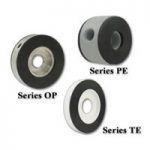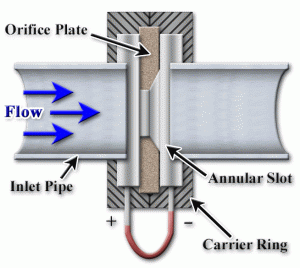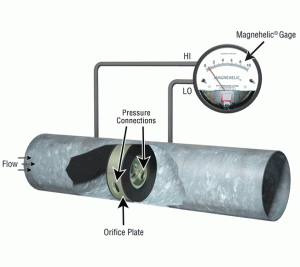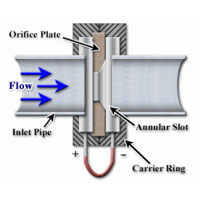Dwyer Instruments offers many types of flow measuring products including orifice plates, which are used as a flow sensing element with a differential pressure monitor.

Orifice plates are a primary flow element, detecting the flow of a fluid passing through the plate by sensing the pressure drop across the plate. When a fluid flows through a restriction in a pipe, it creates a pressure difference between upstream and downstream of the restriction. This pressure difference is proportional to flow rate according to Bernoulli’s principal, similar to a Pitot tube. Orifice plates are commonly used as they are simple to use, low cost, work with gases or liquids, and require low maintenance. Adversely, they do have large pressure losses with about 50% of the pressure drop not recoverable.
An orifice plate is a circular plate inserted into a pipe that has a hole for the flow to pass through. The hole is smaller in diameter than the pipe, creating flow restriction and pressure drop. The hole is most commonly in the center of the plate, concentric; but it may be offset, eccentric. Eccentric plates are used in applications where there are concerns with gas pocket or sediment build up. The plate is mounted in the pipe between flanges that hold it into place.


An orifice plate has two pressure connections on the outside ring to connect tubing that goes to the differential pressure monitoring device. It is common to use a differential pressure gage such as a Series 2000 Magnehelic® differential pressure gage for reading flow with a square root scale if only local indication is needed. For transmission of the flow rate, a differential pressure transmitter is used such as the Series DHC Digihelic® differential pressure controller for gases or Series 3100D explosion-proof differential pressure transmitter for liquids.
To learn more about Dwyer flow monitoring solutions, please visit our website.

